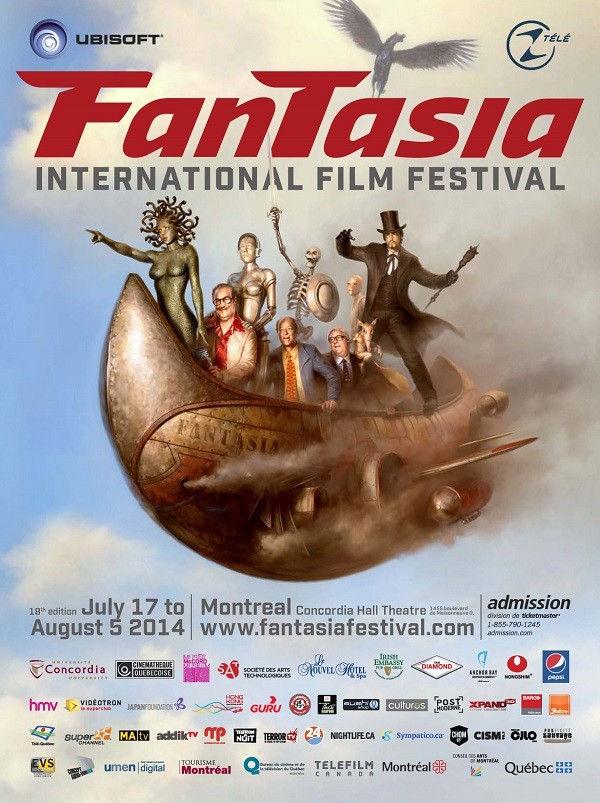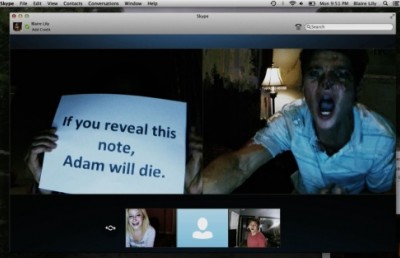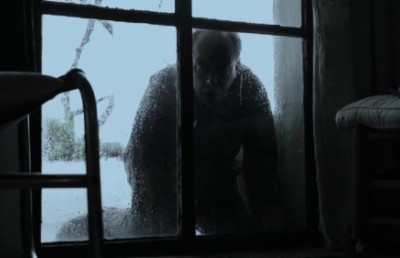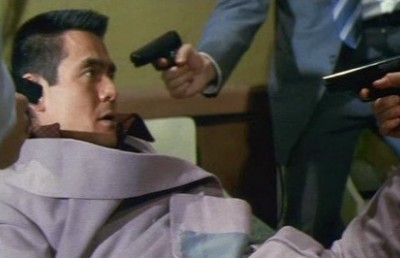Kid Power: Children in the Movies at Fantasia 2014
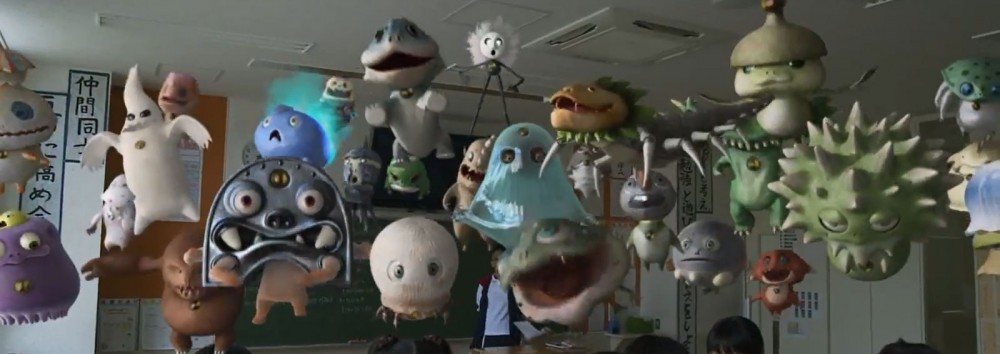
2014 marked Fantasia’s 18th edition. Finally legal! Or so the running gag went. Certainly, the festival has grown up a lot over the last few years, with industry crossover and increasing clout on the circuit while maintaining its commitment to fans as an “audience festival.” But with age comes reflection on the past, so it was appropriate that another running theme of this year’s festival was “Kid Power,” framed by the launch of the first book from Spectacular Optical Press: a collection of essays on kid-themed films and TV edited by Kier-La Janisse and Paul Corupe.
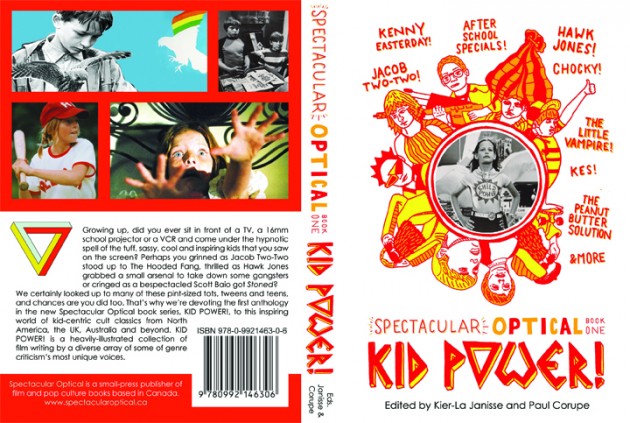
The launch featured signed copies of the book, Kid Power t-shirts, “Kenny” skateboard decks, a free cereal bar, and a rare 35mm screening of Disney’s Something Wicked This Way Comes.
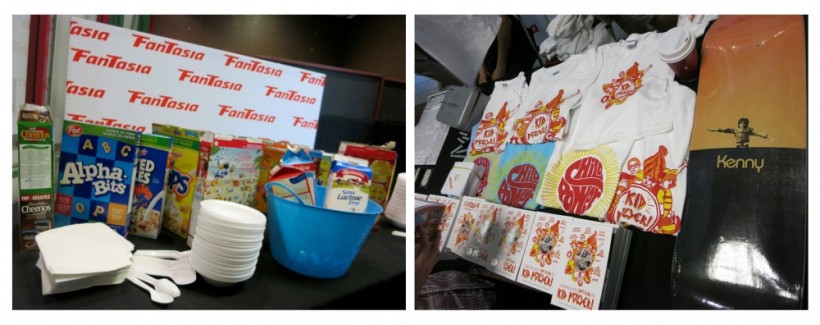
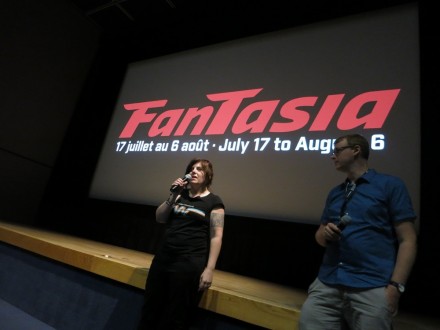
In their intro to the film, Janisse and Corupe talked about how Disney went through a slump in the 70s and 80s during which their traditional animated fare started to suffer as adult animation from Ralph Bakshi and the like were gaining in popularity along with the rise of horror film in the mainstream. So they tried to cash in by producing a series of genuinely scary films geared towards their child market. This was the age of the latchkey kid, fewer stay-home parents to keep an eye their children who were often left home alone to do as they please. With the arrival of the VCR, it was handy to have a selection of movies on hand for kids to keep themselves busy with. All the Disney videos came in the same highly recognizable white clamshell VHS cases with Mickey Mouse on the top, so parents wouldn’t think twice about leaving their kids alone with a few of these. And watch we did, our parents often arriving home from work to find us hiding terrified behind the living room couch.
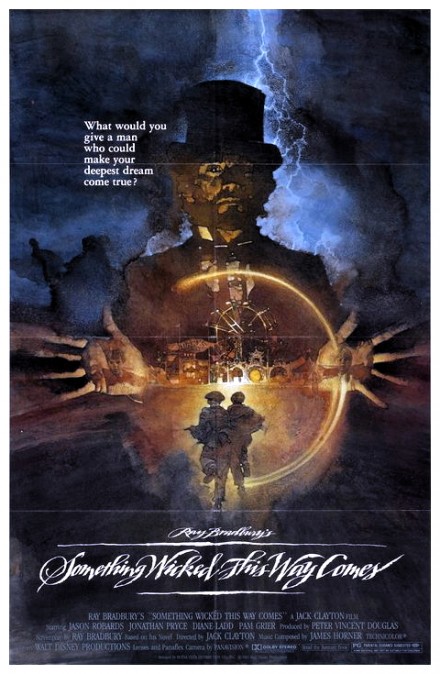
Something Wicked was a beautiful reminder of those days, while also providing a meditation on aging and lost youth. The print itself was gorgeous, and contrasted effectively with the increasing dominance of digital projection at all festivals – even for retro fare. It’s easy to forget how wonderful optical effects look in their native format, and this film had them in spades as all manner of superimposition, matte painting and animated effects were used to evoke the supernatural. On an experiential level, it was a reminder of an older way of doing things brought back to life for a few fleeting moments – a state of mind supported by the narrative itself drawn from a strong story by Ray Bradbury. A father haunted by his failure to save his young son from drowning many years past must now keep his town from getting subsumed by a magic carnival carousel that has the power to make its riders younger or older as they wish. Not without cost, of course, as an aging teacher who wants to be young and beautiful again is granted her wish along with a dose of blindness. The kids, on the other hand, wish they were older and try to get in on the game as well. Though the Kid Power book celebrates stories in which children must so often solve their own problems in the face of absent adults, Something Wicked isn’t quite there as the climax comes when the father redeems himself by getting the kids out of trouble with the power of his wisdom rather than succumbing to his own desire to reclaim the physical strength of earlier days. It’s a justification for aging rather than a glorification of youth. And on that note the film played well into Fantasia’s coming of age celebrations this year.
Part of me has always loved kids movies well into my adulthood, but parenthood has changed the way I think about things. It’s the age-old dilemma: do I let my kids watch the kind of stuff I grew up with? Or is it my job to try and steer them in more enlightened directions? The question becomes essential when selecting festival films to bring my 5 year-old daughter to. I have appreciated the move by many festivals, Fantasia included, to include children’s programming in their schedules. This year, however, the “My First Fantasia” programs only screened on weekday afternoons, an awkward timeslot for working parents with kids in childcare of one kind or another. But we found a couple of other titles screening on the weekend, which turned out to be great choices.
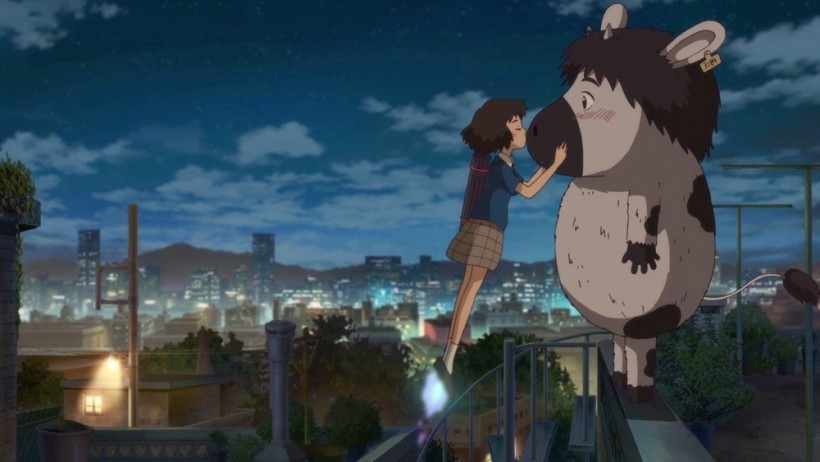
One was the Korean animated Satellite Girl and Milk Cow. We don’t speak Korean and my daughter is too young to follow subtitles, but the film was so inventive visually that it had her entranced from start to finish – with the added bonus of the main character being a girl that she identified with strongly, even if (perhaps especially because) she was a robot with projectile limbs. I only had to whisper plot points into her ear a few times here and there, which was a good thing since I followed with no small difficulty myself. In a world where the brokenhearted take on the appearance of animals, an evil plot is hatched to harvest their still-human organs under cover of legal hunting. Meanwhile the first Korean satellite malfunctions and decides to set course for the Earth after hearing a young boy play some heartbreaking music, and just as he turns into a cow the satellite turns into a girl now forced to save him from the organ hunt. Oh, and also from the giant incinerator robot that is sucking up everything in its wake. It was rad.
_244_360_90.jpg)
One film I wish I had taken my daughter to was the incredible Demon of the Lute, one of two retro Shaw Brothers titles this year. I always have high hopes for Fantasia’s yearly Shaw selections. What I didn’t expect, however, was for it to be a bona fide kids movie, which became clear fairly quickly by way of greatly exaggerated action (yes, even by Shaw Brothers standards), unusually furry costumes, sets filled with oversized plush mushrooms and brain melting colours that transcended even the fading in this original 80s print screened here for the first time anywhere in over 30 years. The plot was also kid friendly, with very young boy as one of the key protagonists assisting a family quest to find one of the magic arrows that can destroy an evil lute, instrument of choice in their rogue uncle’s plot to dominate the land. Dodging giant disco balls and the driverless lute carriage that scours the Earth in search of the deadly arrows, the boy ends up finding one during a castle raid and smuggles it out in the belly of his stuffed bear. The climactic showdown comes as he accidentally gets drunk on another uncle’s wine and challenges the demon of the lute to a duel. The rest, as they say, is history.
I was enthralled, but the silliness of the whole affair came as grand disappointment to a certain distinguished professor of Asian cinemas sitting next to me who was hoping for something closer to King Hu. Fantasia programmer King-Wei Chu seems to have deliberately refrained from labeling Demon as a kids film so as not to deter audiences eager for their yearly dose of 35mm kung fu. But I was delighted at the discovery and couldn’t wait for the following weekend’s Curse of Evil, which boasted rubber suit demons equally worthy of a child’s eye – if only the plot wasn’t quite so rapey.
_440_655_90.jpg)
Yes, I do enjoy rubbersuit. I’m not expecting anything to top Calamari Wrestler a few years back, but I had some hopes up for Jellyfish Eyes, another of this year’s kid-powered films. Filled with all manner of crazy creatures known as F.R.I.E.N.Ds, every kid in town has a digital companion made possible by the special cell phone controllers they are given by a local research team. These F.R.I.E.N.Ds are meant to play out the children’s fantasies, battling each other in the middle of their primary school classrooms and playgrounds while remaining undetectable by adults. In so doing, the devices harness “negative energy” from the children that the sciency-types in the lab believe can save the world. The film spoke volumes about the problem of managing technology in the hands of the very young while questioning who is meant to benefit from such early exposure. It was also a parable about bullying, each F.R.I.E.N.D standing in and up for their adopted kid as they waged war to find out who had the strongest overall allies. I was hoping for more puppetry and rubbersuit action, spurred on by this evocative still used in the festival catalogue:
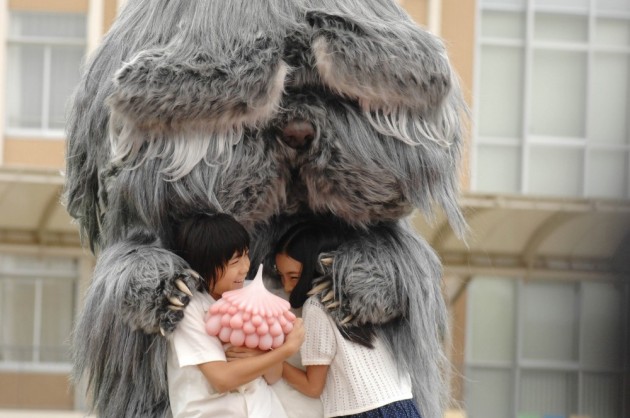
Alas, the effects were mostly CG and ended up pushing things too far with an over the top finale that lost me entirely.
The F.R.I.E.N.Ds as retaliatory bodyguards connected with another kid theme that ran through several of this year’s selections: revenge. Ju-On: The Beginning of the End was perhaps the most obvious in this regard, relying on the time worn foundation of the earlier films to spin an utterly pointless paint-by-the-numbers tale covering the same old ground of unsettled souls of children haunting their old dwellings, attempting to scare the shit out of the audience with insulting appeal to shock cuts and the like.
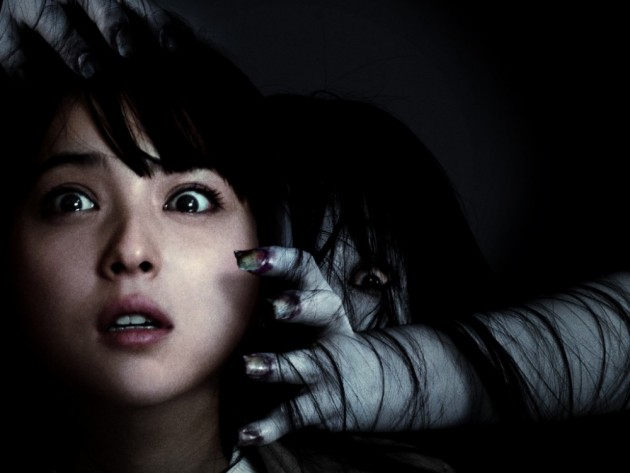
A much more sophisticated take on the child curse premise came from Lee Cronin’s short film Ghost Train, which played in the Small Gauge Trauma program that is generally good for one or two gems a year. Two middle-aged men meet at the site of an abandoned amusement park where, decades earlier, they witnessed a childhood friend disappear into the haunted house ride never to return. This event caused one of the men to age into a distressed alcoholic who can’t let go of what happened, while the other man went on with his life to forge a successful career and settle down with family. One of the men has a confession to make about what truly happened that day, and the missing boy returns from the depths of the haunted house to hear it and claim his revenge.
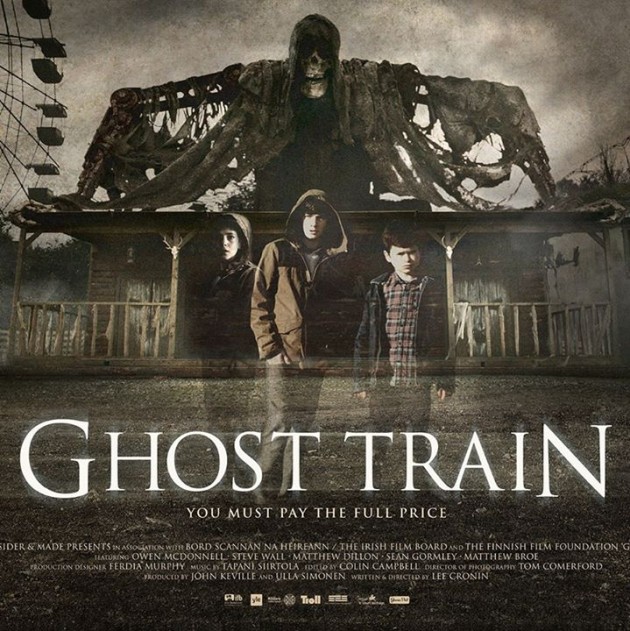
The film is sparse but manages to delve deep into the psychology of regret that frames so much of adult experience, and as such it was a beautifully rendered meditation on the lingering of childhood memories and the responsibility we must take for the effects these have on our later lives. It was icing on the cake that this psychological depth was underscored by the reverberant rumblings of an evocatively staged haunted house whose mechanical workings return to life as the men come to terms with a past they’d rather forget.
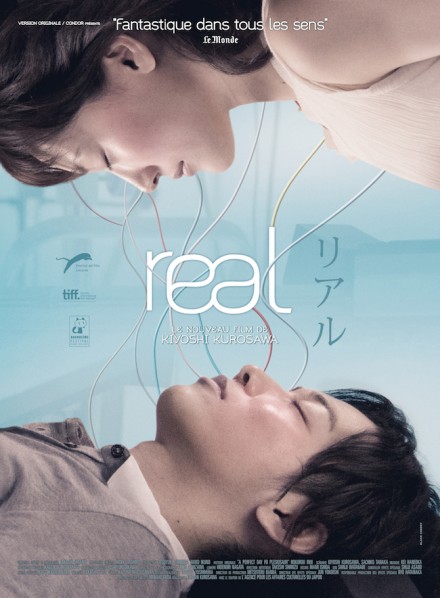
Perhaps my most anticipated film this year was Kiyoshi Kurosawa’s Real, pushing the exploration of psychological depth even further through the premise of a newly developed “sensing” technology that allows people to probe the minds of their comatose loved ones. If anyone should be poised to do a good job of the slippery interface between the insides and outsides of the mind it should be Kurosawa, who has made some of the most haunting psychological thrillers of Japan’s last two decades. Sadly, the film left me a bit flat. Expectations were too high I’m sure, but there was so much potential here as two friends attempt to discover the motivation for the attempted suicide that left another friend in a prolonged coma. Inside her mind they discover preoccupations with one of the characters in the Manga she was working on who develops into an alter ego visible in the world off the page. Surprisingly, the film maintains a rigid demarcation between the real world and that of the mind where I was expecting much more fluidity. The source of her emotional distress, the boy she’s been drawing, turns out to be a spurned childhood crush now back for revenge, which seemed a bit of a cop out, an easy appeal to the financially rewarding premises of child curse films like Ju-On. Kurosawa has done much better with similar threads in earlier films like Séance. Again, however, it was a fitting piece in the mosaic of this year’s array of meditations on childhood and its effects on the lives of the adults these kids grow into.
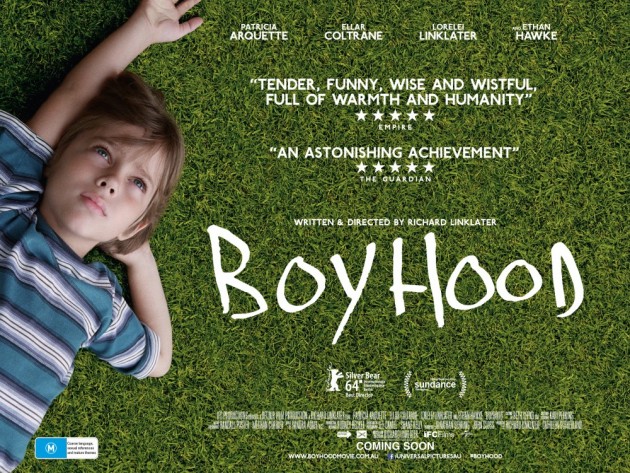
Certainly no other film this year hit that theme as squarely as Richard Linklater’s much-anticipated Boyhood. It was an odd entry for Fantasia, probably one of those “catch it while you can” sort of things. It’s funny to think that what is most fantastical about this film is that which is so ordinary in life: we age, life changes around us, and sometimes we change along with it. Seeing this happen with real people over the course of 12 years through the lens of fiction is unusual, and on that level the film was captivating. But it couldn’t go as far as the 7 Up series, for example, so it had to have a compelling narrative thread to bind the whole thing together. On that point I’ll say what many have said: if the film’s story had been shot the conventional way, with a set of actors working for a few weeks only, would the film have held up? Take the fascination with documented aging out of the picture, and we’re left only to assess the story and its formal treatment on screen. There was so much potential for experimentation here, the goldmine of footage open to manipulation on the editing decks. I, for one, would have preferred a non-linear approach to offer more comparison and contrast between the various stages of each of the character’s lives. But Linklater consciously avoided that sort of thing in favour of a straight up approach that let the narrative shine through. Indeed, elements of the story were powerful and wonderfully acted. But would it have been enough to garner as much critical acclaim without the 12 year shooting schedule?
Enough with the hypotheticals. Let’s talk about the boy, who was the least interesting of all the characters in the film in my humble opinion. There’s no question that Patricia Arquette stole this show. I was pleasantly surprised to find her more convincing as a college instructor than a harried young mother, but she went so much farther than that arc with the depth of her emotional performance as she comes the realization of what her life has amounted to once her son is ready to leave home. Let’s not forget the sister either, Linklater’s own daughter, present on screen as much as her brother for the first ¾ of the film. And of course there was Ethan Hawke. Indeed, why is this film called Boyhood when the story successfully interweaves so many different characters across its temporal trajectory? I learned very little about being a boy in this film; so much more about the hard choices that come with adult parenting. The boy changed so little while the whole world changed so much around him. Maybe my take here reflects my position as a fairly new parent, thinking more about my role as an adult now than about how my kids are going to change over the years. But to do justice to the strong characters all around the boy I prefer the French title that ran on the subtitled copy we had here in Montreal: Jeuness. Roughly translating to “youth,” this covers everyone in the film as they pass from younger days to older, recognizing that the film is about all of them, not just one. Still, the film offered much time for reflection on the connection between being a kid and growing up, and drew a nice thread between so many of the films to explore similar ground in strikingly different ways as Fantasia transitioned to adulthood on its 18th birthday. Many happy returns!
